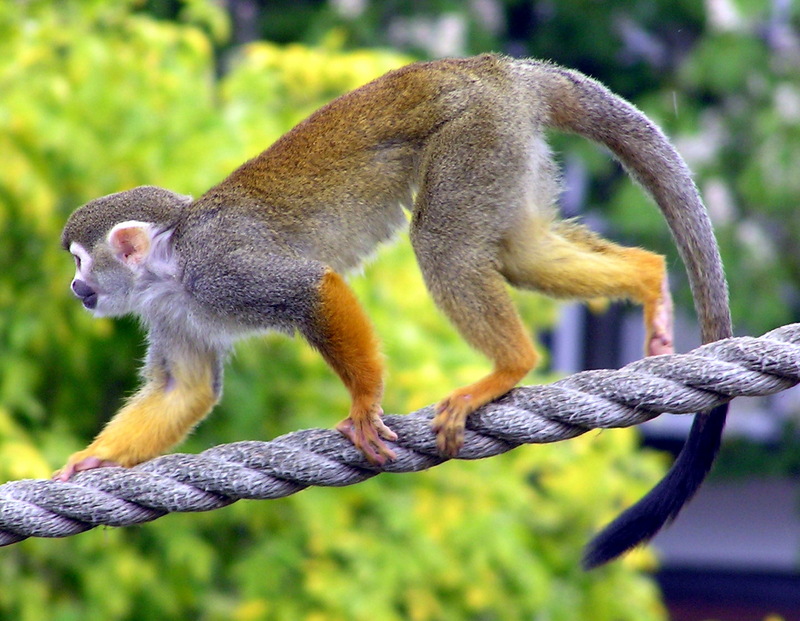|
| Query: birds of america | Result: 1633rd of 1888 | |
Common Squirrel Monkey (Saimiri sciureus) - Wiki
| Subject: | Common Squirrel Monkey (Saimiri sciureus) - Wiki
| |

| Resolution: 1447x1123
File Size: 546422 Bytes
Date: 2005:05:16 13:28:07
Camera: C750UZ (OLYMPUS CORPORATION)
F number: f/3.7
Exposure: 10/4000 sec
Focal Length: 630/10
Upload Date: 2007:10:09 01:12:36
|
Common Squirrel Monkey
From Wikipedia, the free encyclopedia
[Photo] Common squirrel monkey Saimiri sciureus at Bristol Zoo, Bristol, England. Photographed by Adrian Pingstone (http://commons.wikimedia.org/wiki/User:Arpingstone) in May 2005 and released to the public domain.
The Common Squirrel Monkey (Saimiri sciureus) is a small New World primate from the Cebidae family, and native to ten different countries of South America: Brazil, Colombia, Ecuador, French Guiana, Guyana, Peru, Suriname, Venezuela and Puerto Rico.
It lives in very large groups, up to 300 individuals, on moist tropical forests, and usually forages in the medium and lower levels of the forest and sleeps close to the canopy. The females are the dominant members of the group.
It is a very agile monkey, with a high metabolic rate, and although an omnivorous animal, it feeds primarily on insects and other invertebrates. It also feeds on fruits, seeds and other plant parts.
It is common to see these squirrel monkeys in mixed groups, moving along with other primate species and birds.
There are four subspecies of Saimiri sciureus:
Saimiri sciureus sciureus
Saimiri sciureus albigena
Humboldt's Squirrel Monkey, Saimiri sciureus cassiquiarensis
Ecuadorian Squirrel Monkey, Saimiri sciureus macrodon
http://en.wikipedia.org/wiki/Common_Squirrel_Monkey
| The text in this page is based on the copyrighted Wikipedia article shown in above URL. It is used under the GNU Free Documentation License. You may redistribute it, verbatim or modified, providing that you comply with the terms of the GFDL. |
|
Comments |
|---|
| | ASJHDJKASDASDKFHafjkadsfksdfha |
|
| hello |

|

|

|
birds of america
1633/1888 |

|

|
^o^
Animal Pictures Archive for smart phones
^o^
|
|
|

